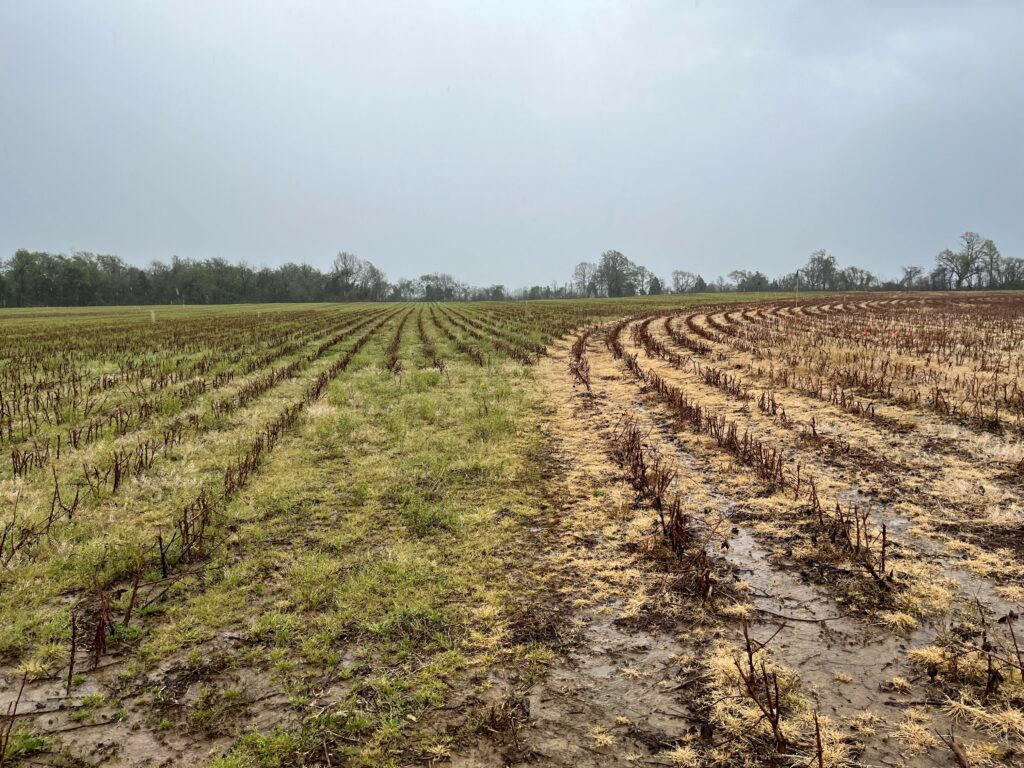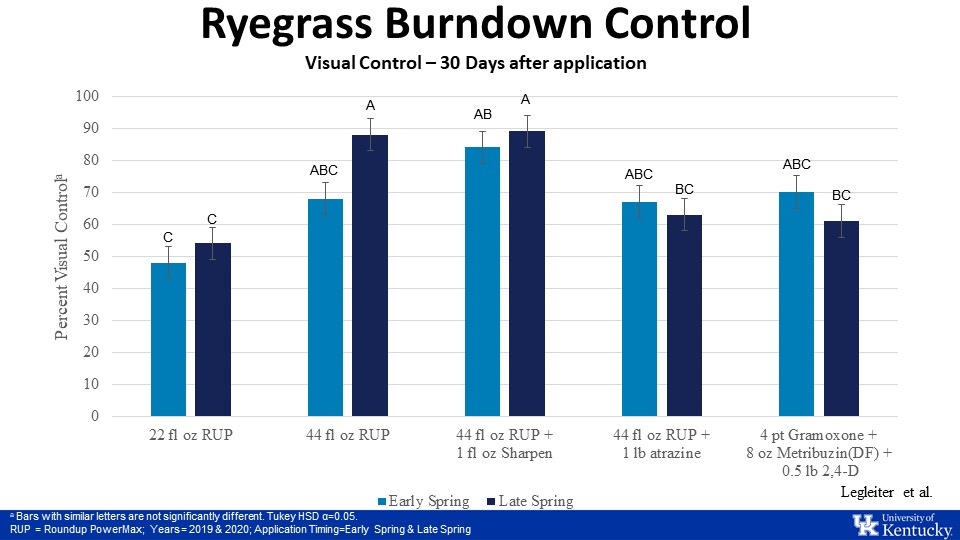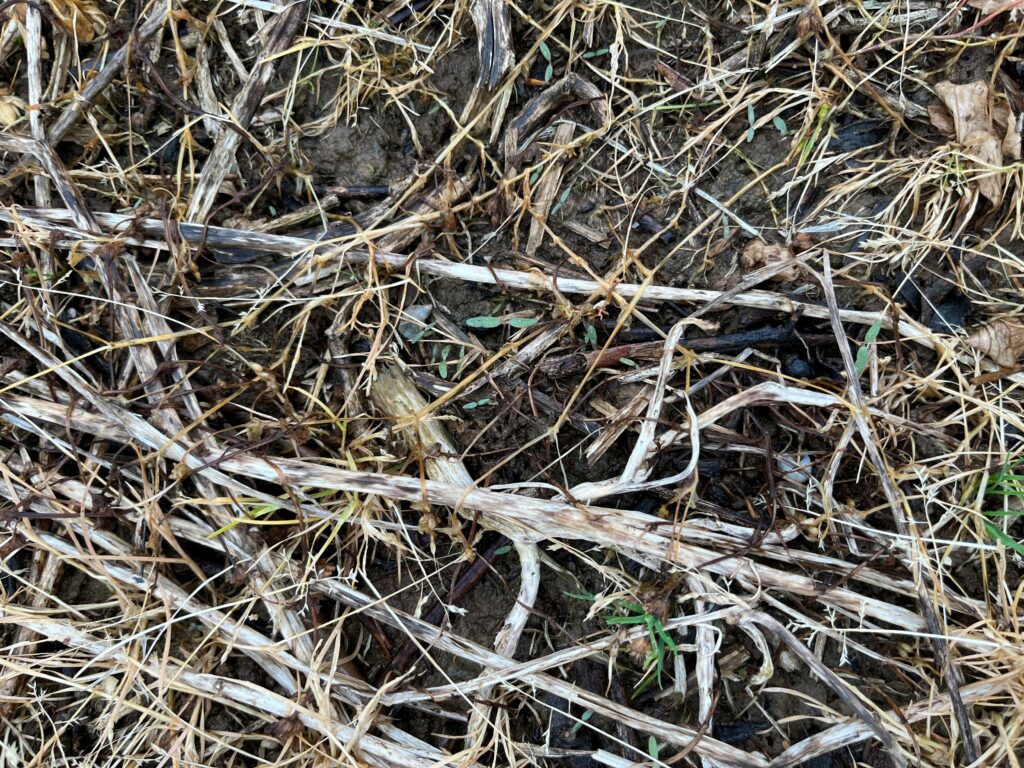
We have had the opportunity to observe field and demo burndowns around West Tennessee. In general, going back “old school” and applying glyphosate alone provided very effective burndown. This includes applications made back in mid-March when night time temperatures were below freezing (Picture 1).
There are really three reasons for this. First recent research from Travis Legleiter at the University of Kentucky shows that glyphosate in burndown applications applied at 1.5 lbs/A is more effective on ryegrass than 0.75 lbs/A (Figure 1). Second herbicides like dicamba or atrazine (Figure 1) that can regularly hinder grass control of glyphosate were left out of the tank. Third is that glyphosate-resistant horseweed pressure in many fields is very scarce.

In fields observed that were infested with horseweed the addition of Elevore controlled horseweed and did not appreciably set back grass control of glyphosate. The addition of Reviton to glyphosate also showed very good control of winter annual grasses but did allow horseweed escapes. In fields where Sharpen or Verdict were added to glyphosate overall weed control was very effective.
As we transition to late spring applications, adding something for residual weed control can be a good plan. Herbicides like Leadoff can enhance glyphosate control of larger ryegrass while providing residual control of late emerging horseweed and grasses. Corn may be planted immediately after a Leadoff application while a 30-day waiting period is needed before planting soybean or cotton.

Palmer amaranth has started emerging in some fields (Picture 2). As burndowns continue consider adding something for residual pigweed control that would be appropriate for the planned crop if tillage or Gramoxone application is not planned at planting.

